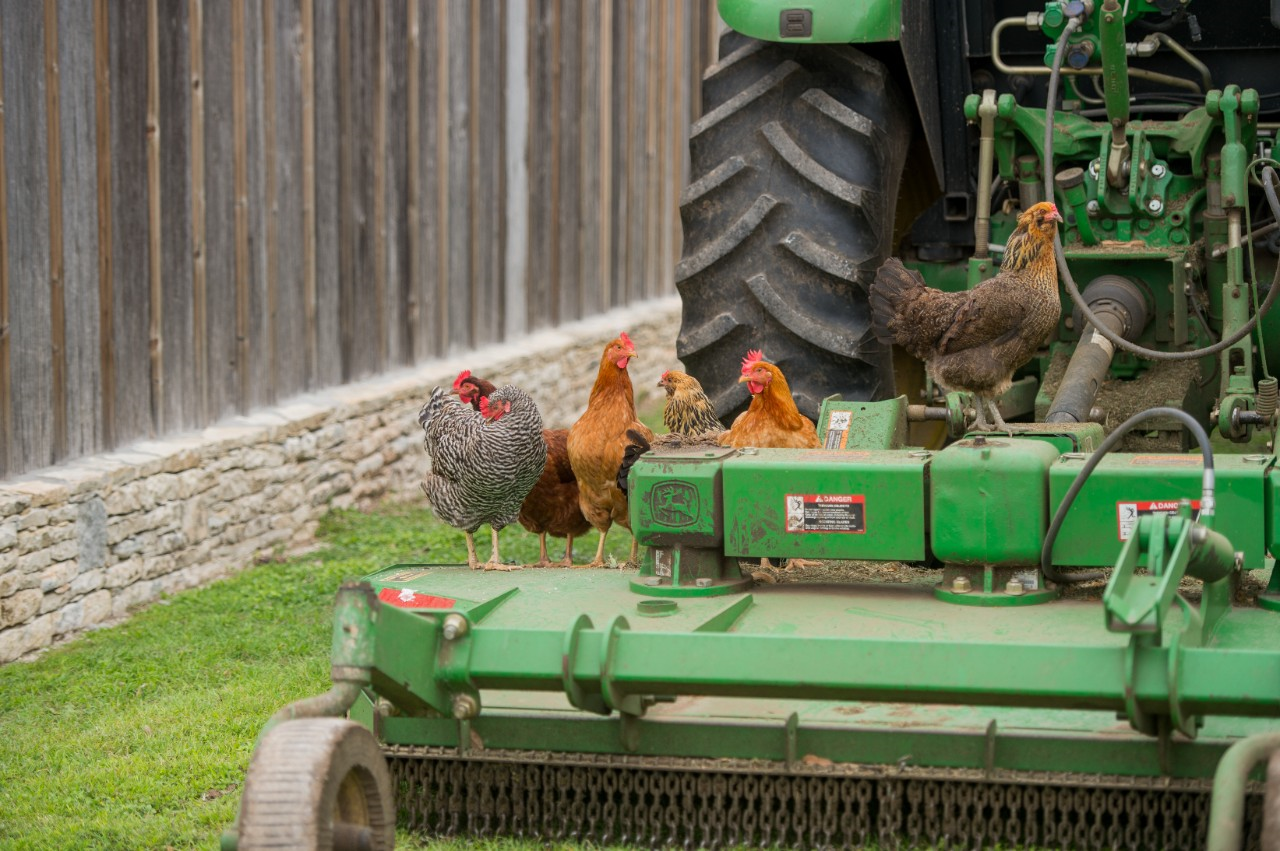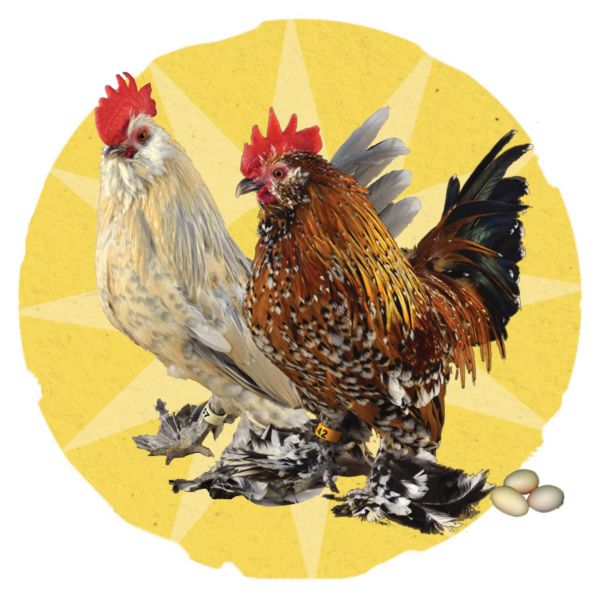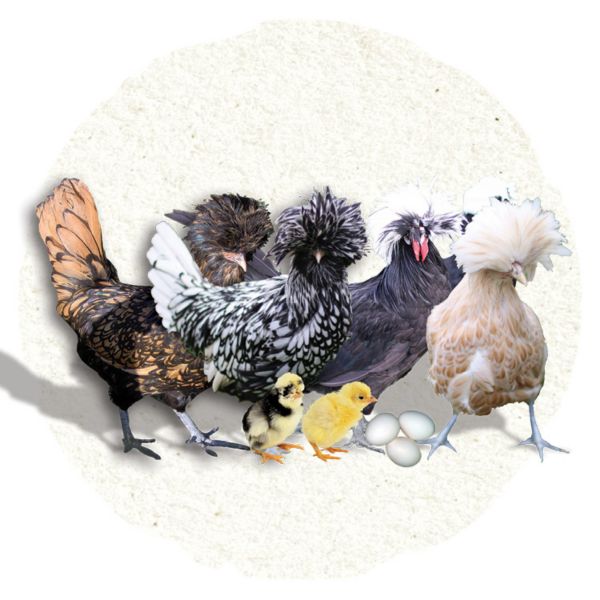Breed type
Dual-purpose (egg and meat), ornamental
Egg color
Brown/chocolate brown
Pen or free-range?
Both
Temperament
Mostly calm and friendly
Bielefelder quick facts
Lifespan: 7-10 years
Weight: Females (hens): 8-10 lbs.; Males (roosters): 10-12 lbs.
Appearance: Brown/gray (hens) or orange/black (roosters)
Egg Production: 230-280 eggs/year
Good for Beginners: Yes
There’s a lot to love about Bielefelder chickens. This dual-purpose breed has an easygoing personality and lays an impressive amount of eggs each year. As America’s largest rural lifestyle retailer, Tractor Supply offers what you need to know about poultry breeds like Bielefelders.
History of Bielefelder Chickens
Bielefelder chickens were first developed in the 1970s by German breeder Gerd Roth. Interestingly, this German breed came about by crossbreeding several American chickens, such as Rhode Island Reds, Wyandottes and New Hampshires. It’s also thought they contain some Welsummer, Cuckoo Maran and Maline. Bielefelder (pronounced bee-la-fel-der) is a shortened name; the full name is Bielefelder Kennhuhn. This is an updated version of the original, much more German-sounding name – Bund Deutscher Rassegeflügelzüchter. The name comes from the German town where this breed originated. The Bielefelder made its way to the U.S. in 2011. This breed isn’t recognized by the American Poultry Association (APA).
Temperament and Good-to-Knows
The most challenging aspect of Bielefelder chickens is pronouncing their names. This breed has a friendly and docile personality and enjoys interacting with people. Even roosters, which may get aggressive when protecting hens, allow their human keepers to pet or cuddle them. Whether experienced or new to keeping – or introducing little ones to chickens – Bielefelders make a great choice. Other good things to know about Bielefelders include:
- Not broody but often good mothers: Although Bielefelders aren’t very broody, they tend to be great mothers when chicks hatch.
- Not a loud chicken: If you have a backyard flock, you might consider Bielefelders because they’re a quieter breed.
- Active foragers and aware of predators: Bielefelders love to forage and can help reduce bugs in your yard or farm. They stay on high alert for predators during foraging, and roosters may even stand up to predators.
- Autosexing chickens: Bielefelders are autosexing, meaning you can distinguish between males and females at birth. This is beneficial for keepers purchasing these birds for specific reasons.
- Hardiness in different climates: From harsh winter weather to hot, dry summers, Bielefelders are hardy and thrive in most environments. They tend to fare better in the cold than the heat.
Visual and Egg Characteristics
Even though Bielefelders aren’t standardized by the APA, this doesn’t mean they aren’t pretty birds. They have distinct feather patterns. That being said, it’s their dual utility for meat and egg production that makes them attractive to many keepers. Discover the physical and egg characteristics of Bielefelders:
Physical Characteristics of Bielefelders
As mentioned, Bielefelders are autosexing. When chicks hatch, the females have a dark stripe down their backs that resembles a chipmunk’s. Males are lighter and have white specks on their heads. As adults, hens are brown with gray barring. Roosters have orange feathers with black tails and barring on their chests. These chickens have single combs and yellow legs. Some variations include the cuckoo-pattern and silver Bielefelder. Bielefelders are a heritage breed so breed true throughout generations.
Just looking at these chickens you’ll know they were made for the dinner table. The hens reach between 8 and 10 pounds, and the roosters weigh between 10 and 12 pounds. This size provides more meat per chicken than other breeds, not to mention its delicious taste.
Bielefelder Egg Production
If you want a chicken with great egg-laying capabilities, know that Bielefelders can lay between 230-280 eggs per year. Hens lay large, brown/chocolate brown eggs with pink undertones. What’s more, Bielefelders lays eggs all year long. Of course, this depends on a chicken’s nutrition and care. Since Bielefelders are large and bred for meat consumption, they will take longer to start egg production than other breeds. The time to maturity is about 22 weeks.
Due to their distinct brown eggs, Bielefelders are sometimes crossbred with blue-laying chickens to develop Olive Egger chickens. As the name suggests, these chickens lay unique olive-colored eggs.
Health and Care
Keepers can expect Bielefelders to live up to 10 years, longer than the life expectancy of other breeds. However, a chicken’s health and wellness often influence its lifespan. Proper care will ensure the comfort of your birds and allow you to reap their many benefits. Follow these tips for Bielefelder health and care:
- Bielefelders need a little extra to eat: Given that Bielefelders can weigh more than 12 pounds, their feed needs are higher than smaller breeds. Even Bielefelder chicks eat more. Be sure your birds get high-quality poultry feed for proper nutrition and better egg production.
- Consider more space in the run: Bielefelders thrive as free rangers and in confinement. If you must keep them confined, ensure adequate space in the run since they love to forage. In addition to the coop or pen, provide proper ventilation, nesting boxes, bedding and other accessories crucial for a chicken’s comfort and safety.
- Considerations in more extreme conditions: Bielefelders are hardy but can succumb to weather-related problems like frostbite in winter or heat stress. Accessories like coop heaters and extra waterers can protect your birds when conditions get intense.
- Special health concerns: Bielefelders have no specific health concerns outside what’s common for all chickens. Still, you want to monitor their health and notify a veterinarian of troubling behavior or possible symptoms of injury or illness.
Frequently Asked Questions About Bielefelders
What makes Bielefelder chickens good for beginners?
Bielefelder chickens have a docile, friendly temperament and aren’t very noisy. They thrive in confinement and as free-range birds and are predator-savvy. They don’t have extra health concerns and have standard housing requirements. The only additional consideration is feed. Since these chickens grow large, they often need more feed than other breeds.
What does it mean that Bielefelders are autosexing?
When Bielefelder hens lay eggs, you can immediately tell the difference between females and males because of their distinct colors and patterns.
Do Bielefelders lay a lot of eggs?
Bielefelders lay an average of 230-280 eggs a year. They even lay consistently in the winter when many other breeds lay fewer eggs. Understand that certain factors can affect egg quality, such as a chicken’s nutrition. Additionally, Bielefelders lay eggs later than other breeds, with the first egg coming at 6 to 10 months old.
Find What Your Flock Needs at Tractor Supply
Bielefelders are a good choice when starting a flock or introducing new chickens to an existing flock. You can find Bielefelder chickens and other breeds at Tractor Supply. With over 85 years of experience, we also offer what you need to know about keeping chickens in The Coop. Shop online for live chickens and poultry supplies or visit your local Tractor Supply store today.


